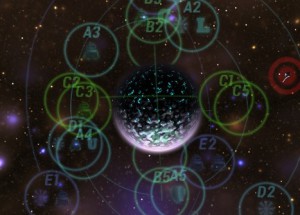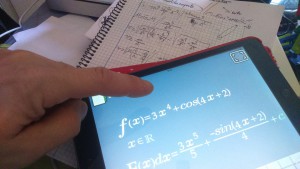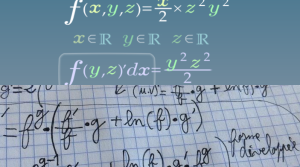FPS (First Person Shooters) have become very popular and never ceased to improve since twenty years. They propose players to explore worlds in three dimensions, in a very simple and intuitive way. In this constantly renewed kind of game, using the same rules and codes, original variations sometimes appear:

In “Earths Of Alioth”, released in 2015, Space has become Spherical: the notion of high and low is completely gone: and for good reason, we are on satellites orbiting distant exoplanets in a fairly realistic space environment.
However, most FPS rules are present. Only the movement mode changes: You must jump from satellite to satellite, pursuing drones, also in orbit. The issue of space management, essential for the player, is thereby upset: How to move toward or away from another point of space? How to find the shortest path from one point to another by jumping on the satellites, themselves in movements? These issues are more likely common to a Space Agency, but they find immediate intuitive responses in the game.
According to us, these intuitions are natural because there are links between two-dimensional geometry, three-dimensional, and spherical geometry, the latter sharing mathematical properties with the previous two.
Video games have experienced a two-dimensional era, then a three-dimensional, it makes sense that more “Spherical Games” make their appearances. Today’s Haptic screens and tablets fit that perfectly.
“Earths Of Alioth” is available on iTunes App Store and Google Play.
Links: → Visit Store → Search Google
Links: → Visit Store → Search Google


